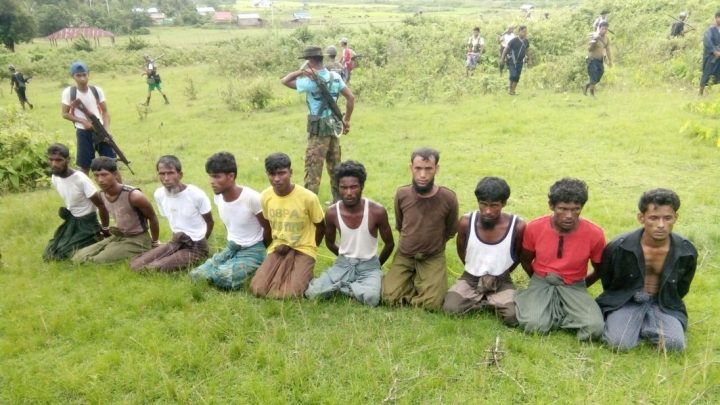By Dr Arshad M Khan
Very quietly, without fanfare, in a story that went by almost unnoticed, the U.S. State Department website posted a report this week on the Rohingya massacres and atrocities. Based on a survey, for which it contracted a Washington-based law firm (PLPG — Public International Law and Policy Group) to conduct the interviews, the report relied on 15,000 pages of supporting evidence. It documented a planned, organized effort to terrorize and drive out the Rohingya community. The firm, too, has posted data and legal findings on its own website.
PILPG’s investigators conducted 1024 interviews with Rohingya survivors in Eastern Bangladesh refugee camps and settlement areas. They drafted an initial overview for the State Department followed by detailed documentation in the form of a database with more than “13,000 coded instances of grave human rights violations.” A second report titled, “Factual Findings and Legal Analysis Report” is expected to be issued sometime next month (October 2018).
The State Department report notes specifically that any hearsay evidence was not recorded; the interviewees were eyewitnesses to the horrors. Eighty-two percent actually saw the killings and a similar number observed the destruction and burning of huts and villages. There are numerous aerial views of the destruction, patches of lifeless brown in a lush, green landscape. Fifty-one percent witnessed sexual violence of which 45 percent constituted rapes — 18 percent were gang rapes.
The military were by far the worst perpetrators. Others involved were police or armed civilians. The methods employed in some cases were designed to cause “mass casualties … locking people in houses to burn them, fencing off entire villages before shooting into the crowd, or sinking boats full of hundreds of fleeing Rohingya” (p. 2).
Gang rapes were common. In one case, they abducted some 80 women to rape. In another, a mother reported that “during a rape of roughly 100 women, her daughter was raped, then mutilated and killed … .” Other mutilations included “cutting babies out of their pregnant mothers’ bellies … .” Soldiers are reported to have “cut off the breasts of women they raped … mutilated genitals or other parts of their bodies” (p. 17).
Systematic, organized atrocities perpetrated by a de facto authority are considered crimes against humanity. These include massacres, summary executions, rapes, religious persecution and the terrorism experienced by the Rohingya. Article 7 of the Rome Statute establishing the International Criminal Court is reproduced under the UN’s definition of crimes against humanity. Any one of the ten actions described are sufficient for guilt and in Myanmar the authorities perpetrated at least eight.
The State Department report carefully avoids calling the acts, ‘crimes against humanity,’ a term that could have legal implications and obligate it to “stronger punitive measures.” However, the UN Human Rights Council continues to forge ahead and on September 27 it set up an agency to collect and consolidate evidence to facilitate any future prosecutions by the ICC.
The UN’s 440-page report released the previous week on September 18, documented in detail the horrific damning evidence and called for the Myanmar military and six senior generals including the commander-in-chief to be referred to the ICC. The latter has commenced its own preliminary investigation. Let’s hope the mercurial Mr. Trump wakes up peevish on the wrong side of the bed one morning soon. Even that might not be enough for the generals to face justice as ICC investigations require cooperation by the Myanmar government.
Author’s Note: This article first appeared on Counterpunch.org
Dr Arshad M Khan (http://ofthisandthat.org/index.html) is a former Professor based in the U.S. whose comments over several decades have appeared in a wide-ranging array of print and internet media. His work has been quoted in the U.S. Congress and published in the Congressional Record.






